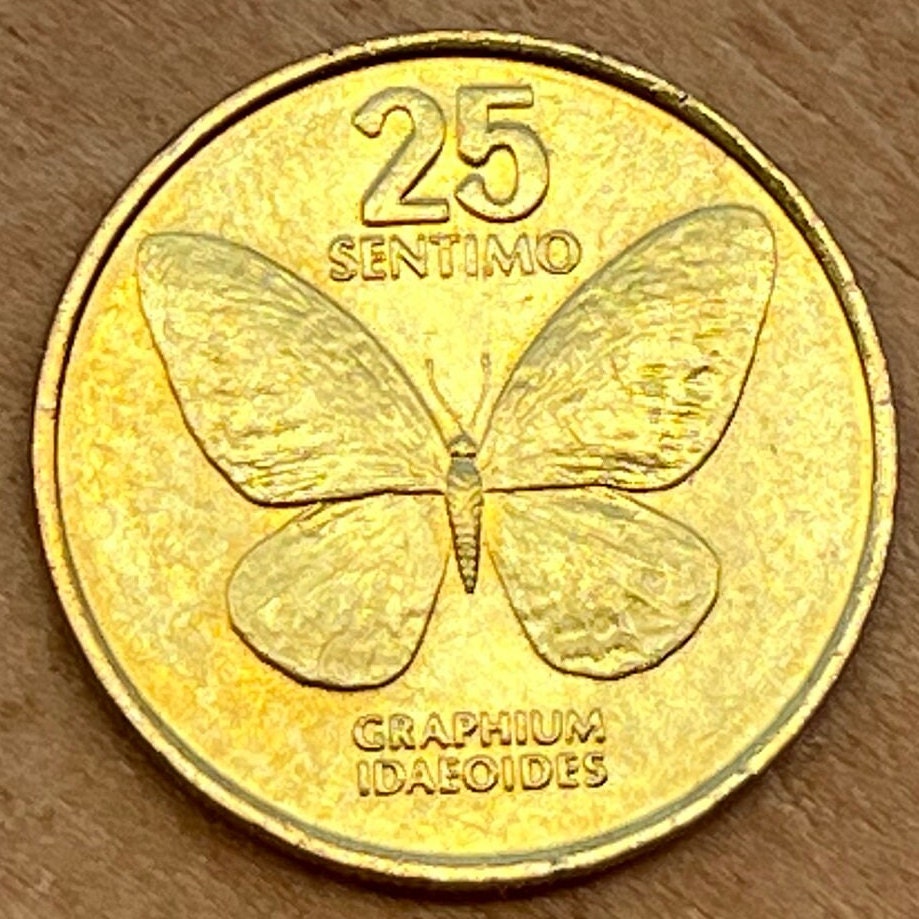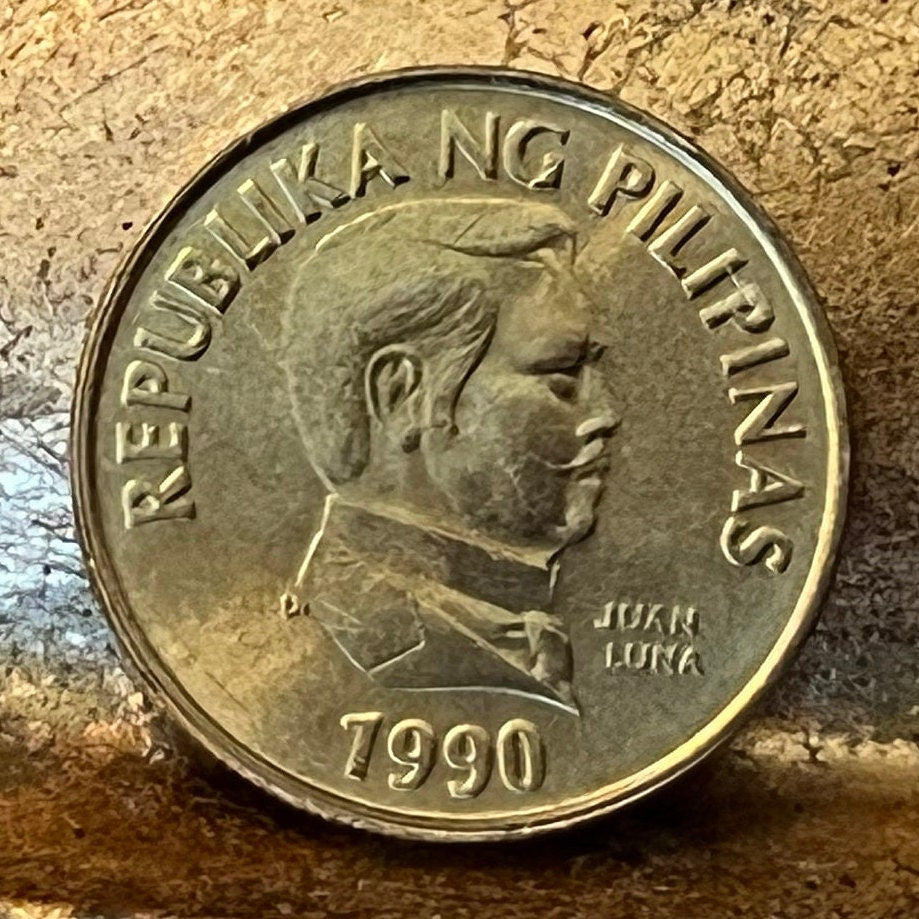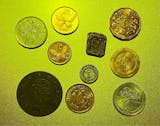elemintalshop
Revolutionary Artist Juan Luna & Swallowtail Butterfly 25 Sentimo Philippines Authentic Coin Money for Jewelry (Graphium Idaeoides)
Revolutionary Artist Juan Luna & Swallowtail Butterfly 25 Sentimo Philippines Authentic Coin Money for Jewelry (Graphium Idaeoides)
Couldn't load pickup availability
Revolutionary Artist Juan Luna & Swallowtail Butterfly 25 Sentimo Philippines Authentic Coin Money for Jewelry and Craft Making (Graphium Idaeoides)
Obverse: Bust of Juan Luna facing right
Lettering: REPUBLIKA NG PILIPINAS
JUAN LUNA
Translation: Republic of the Philippines
Juan Luna
Reverse: A swallowtail butterfly (Graphium idaeoides), endemic to the Philippines, mimics a toxic butterfly named Idea leuconoe as a protection against predators, and the value above, scientific name below.
Lettering: 25 SENTIMO
GRAPHIUM
IDAEOIDES
Edge: Reeded
Features
Issuer Philippines
Period Republic (1946-date)
Type Standard circulation coin
Years 1983-1990
Value 25 Sentimo (0.25 PHP)
Currency Piso (1967-date)
Composition Brass
Weight 3.9 g
Diameter 21 mm
Thickness 1.68 mm
Shape Round
Technique Milled
Orientation Medal alignment ↑↑
Demonetized 2 January 1998
Number N# 2462
References KM# 241.1, Schön# 82
Wikipedia:
Juan Luna de San Pedro y Novicio Ancheta (Spanish: [ˈxwan ˈluna]; October 23, 1857 – December 7, 1899) was a Filipino painter, sculptor and a political activist of the Philippine Revolution during the late 19th century. He became one of the first recognized Philippine artists.
His winning the gold medal in the 1884 Madrid Exposition of Fine Arts, along with the silver win of fellow Filipino painter Félix Resurrección Hidalgo, prompted a celebration which was a major highlight in the memoirs of members of the Propaganda Movement, with the fellow Ilustrados toasting to the two painters' good health and to the brotherhood between Spain and the Philippines.
Regarded for work done in the manner of European academies of his time, Luna painted literary and historical scenes, some with an underscore of political commentary. His allegorical works were inspired with classical balance, and often showed figures in theatrical poses.
********
Wikipedia:
Graphium idaeoides (Philippine butterfly) is a species of butterfly in the family Papilionidae. It is endemic to the Philippines. It is a perfect mimic of Idea leuconoe.
*********
Swallowtail butterflies are large, colorful butterflies in the family Papilionidae, and include over 550 species. Though the majority are tropical, members of the family inhabit every continent except Antarctica. The family includes the largest butterflies in the world, the birdwing butterflies of the genus Ornithoptera.
Swallowtails have a number of distinctive features; for example, the papilionid caterpillar bears a repugnatorial organ called the osmeterium on its prothorax. The osmeterium normally remains hidden, but when threatened, the larva turns it outward through a transverse dorsal groove by inflating it with fluid.
The forked appearance in some of the swallowtails' hindwings, which can be seen when the butterfly is resting with its wings spread, gave rise to the common name swallowtail. As for its formal name, Linnaeus chose Papilio for the type genus, as papilio is Latin for "butterfly". For the specific epithets of the genus, Linnaeus applied the names of Greek figures to the swallowtails. The type species: Papilio machaon honored Machaon, one of the sons of Asclepius, mentioned in the Iliad. Further, the species Papilio homerus is named after the Greek poet, Homer.
Share





















